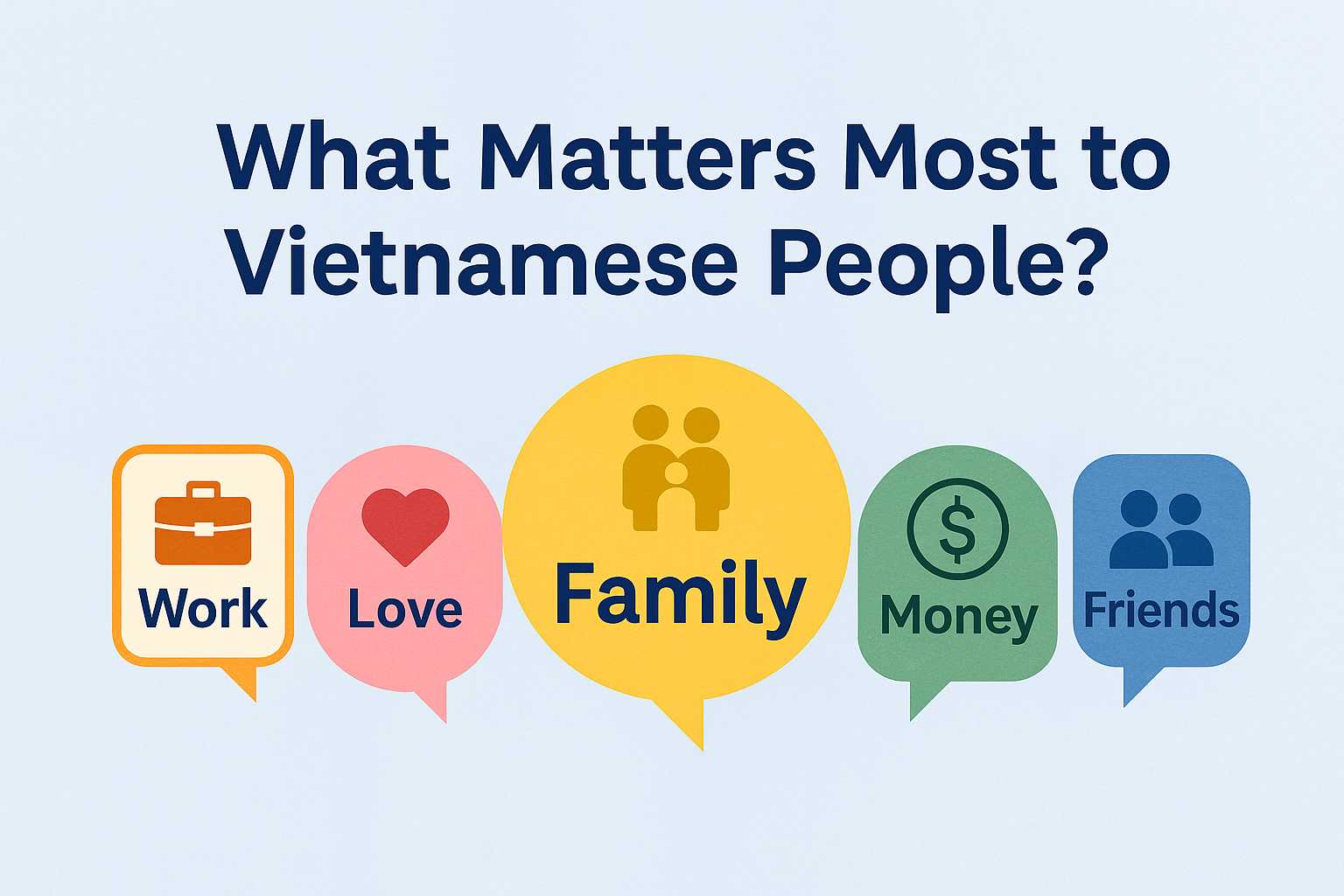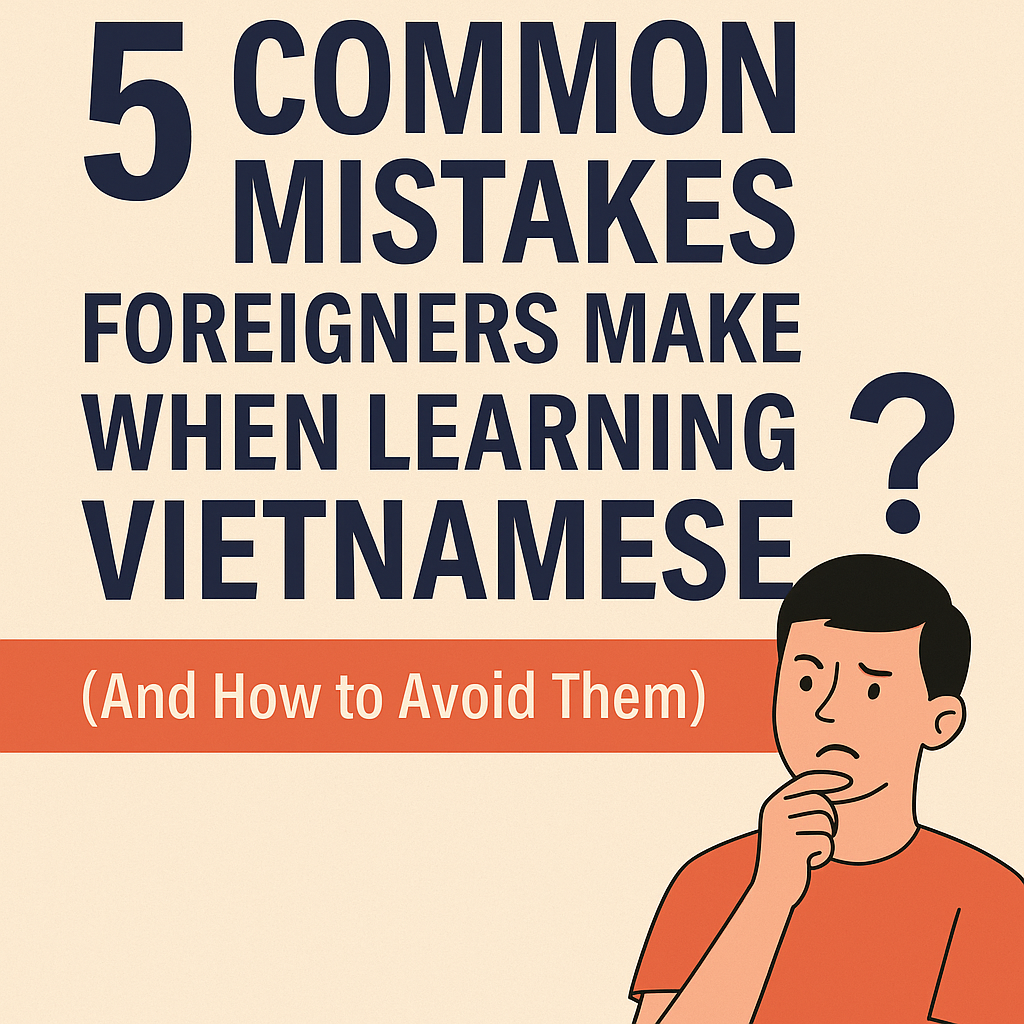Is Vietnamese Hard to Learn? What Americans, Germans, Aussies, and Other Expats Should Know

Tones? Grammar? Pronunciation? Here's the truth and how to overcome it.
If you're an expat, traveler, or overseas Vietnamese who’s ever wondered “Is Vietnamese difficult to learn?” - you're not alone. For many Americans, Australians or Germans, Vietnamese language seems like a mysterious code: tonal, unfamiliar, and fast. But here's the real question: Is Vietnamese truly hard? Or is it just unfamiliar?
Let’s break it down into two parts:
Why Some People Find Vietnamese Hard
1. Tonal Language Confusion
Yes, Vietnamese is a tonal language, and each syllable carries one of six tones. This means that the same letters like “ma” can mean six different things depending on pitch: ghost, mother, cheek, horse, tomb, or curse. Sounds overwhelming?
Inside the textbook “Vietnamese with Ease 1”, we clearly explain the Vietnamese tones right from the Introduction — with tone symbols, pitch graphs, and pronunciation guides.

2. Pronunciation Is Tricky at First
Vietnamese uses the Latin alphabet, but the pronunciation rules are very different. Words like “phở” (Vietnamese noodle) often feel impossible to say, until you understand how the sounds work. That’s why in every chapter of “Vietnamese with Ease”, we include Pronunciation Practice tables with audio recordings, where learners can repeat after native speakers and build muscle memory.

Why Vietnamese Is Easier Than You Think
1. Simple Grammar Rules
No verb conjugation. No plural endings. No gender. You don’t have to worry about “I go,” “he goes,” or “they went.” The verb stays the same in Vietnamese! This makes sentence patterns easy to memorize and re-use in daily life.
- Hôm nay, tôi ăn phở. = Today, I eat pho.
- Hôm qua, anh ấy ăn phở . = Yesterday, he ate pho.
- Ngày mai, chúng em ăn phở = Tomorrow, we will eat pho.
-> Same verb: “ăn” = eat.
2. Familiar Alphabet
Unlike Thai or Mandarin, Vietnamese uses the Roman alphabet, just with extra accent marks. You won’t need to learn a new script — just new sounds. With structured pronunciation and repetition (like we offer in our book), you can build a solid foundation even as a complete beginner.
3. Culture Helps Context
Learning Vietnamese isn't just about language. It's also about understanding how people talk. In Vietnam, the way you say something (tone + politeness + age) matters. At iSpeak Vietlingo, we integrate cultural insights with language learning so you don’t just learn Vietnamese, you learn how to use it in real life.

How iSpeak Vietlingo Can Help
At iSpeak Vietlingo, we specialize in helping Americans, Australians, Germans, Singaporeans and other expats get over the fear of learning Vietnamese and actually start speaking. Our course and textbook “Vietnamese with Ease” are:
- Designed for total beginners
- Packed with pronunciation drills + native audio
- Structured with clear tone explanations
- Focused on real-life, everyday Vietnamese
- Flexible for busy professionals and travelers
Ready to get started?
Visit our website: https://ispeakvietlingo.com and Book a Free Trial Lesson with iSpeak Vietlingo
Start Your Vietnamese Journey Today
Get your copy of 'Vietnamese with Ease' and begin mastering the Vietnamese language with confidence and cultural insight.
Order Your Copy Now



